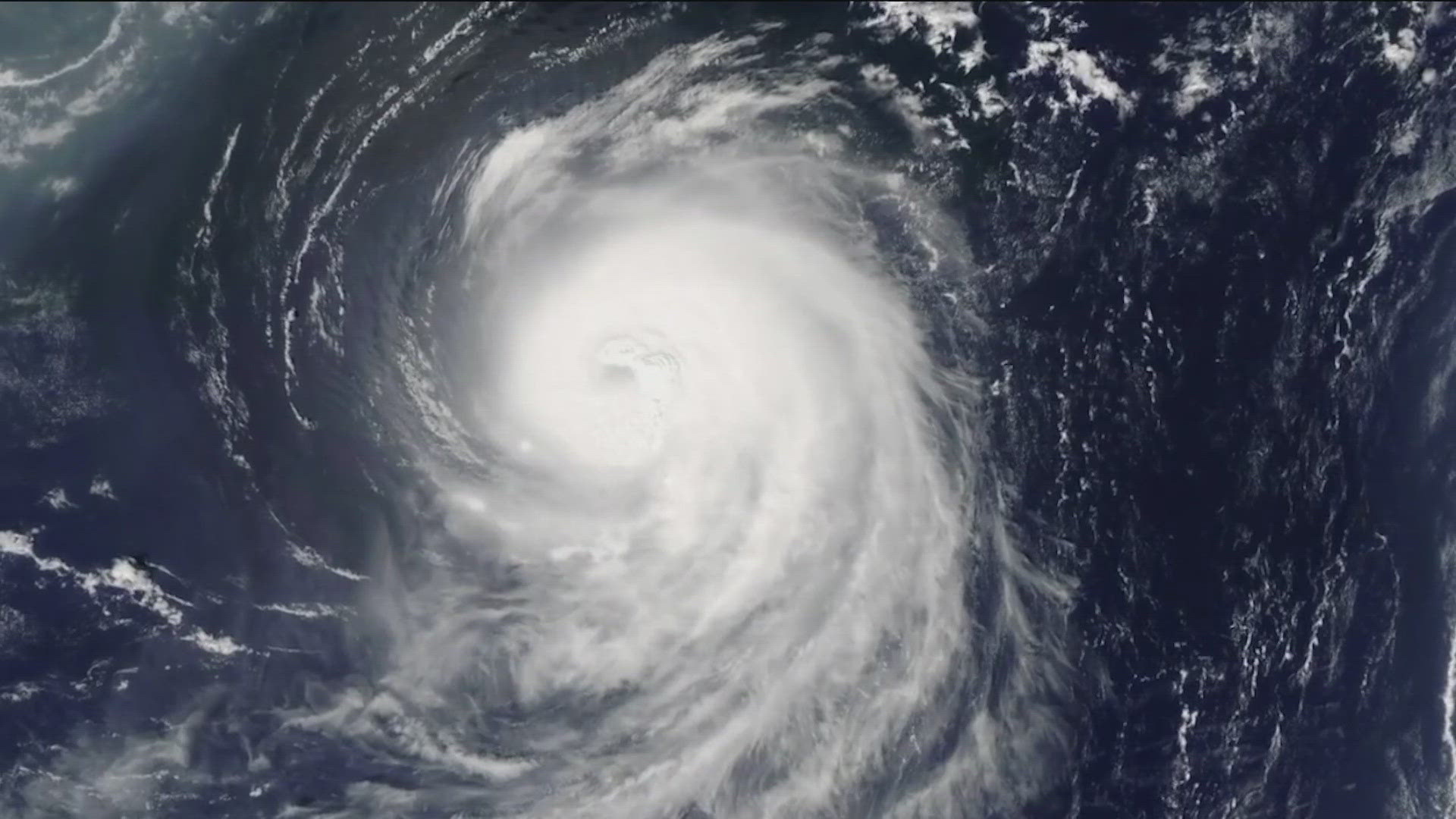AUSTIN, Texas — While Central Texas isn't directly on the Gulf Coast, it's still close enough to feel the effects of hurricane weather.
Historically, our area has experienced major flooding, devastating tornadoes and damaging winds from tropical storms and hurricanes that came ashore along the Texas coast.
Hurricanes are areas of low pressure that form over warm tropical water. These powerful storms navigate throughout the ocean bringing heavy rainfall, powerful wind and destructive storm surges.
Even though Austin is 200 miles from the Gulf of Mexico, past hurricanes have affected Central Texas.
You wouldn't be able to tell just by walking around Mueller these days, but in 1980, Hurricane Allen spawned tornadoes that damaged planes at what was once known as the Mueller Airport.
In Travis County, EF-0, EF-1 and EF-2 tornados formed. Across Central Texas, 11 tornadoes occurred as Hurricane Allen made landfall in South Texas, just northeast of Brownsville, before it moved through northern Mexico.
In 2010, Tropical Storm Hermine brought some of the most notable rainfall to the area. Flooding occurred in parts of Georgetown, which saw more than 13 inches of rainfall.
Meanwhile, Hurricane Harvey was historic for many reasons, but locally, it brought record flooding to Fayette County in La Grange. Climate experts say flooding concerns will continue to rise.
"We know that human-caused climate change rainfall with hurricanes is going up," Dr. Daniel Gilford with Climate Central said. "Something by like 10 to 15% across the storms that we see."
The 2024 hurricane season could be a big one for the Atlantic basin. NOAA released its most active May outlook to date with a forecast of eight to 13 hurricanes, with four to seven becoming major hurricanes. An average hurricane season consists of 14 named storms, seven hurricanes and three major hurricanes.
The Atlantic hurricane season runs from June 1 through Nov. 30 with peak activity occurring around Sept. 10.

